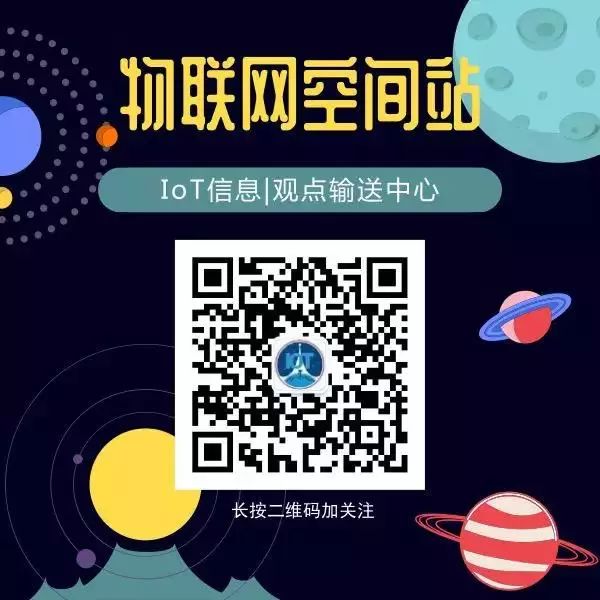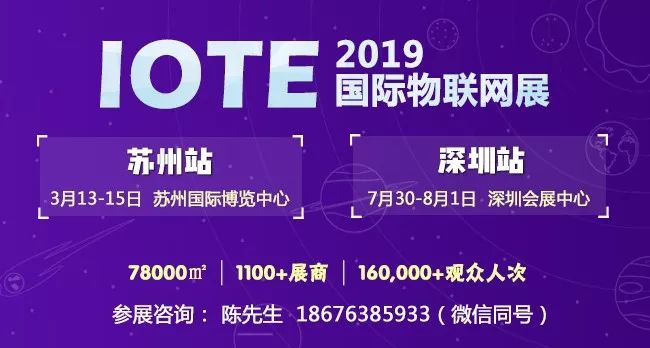
Source: Aisen Smart, Thinking
Author: IoT Media Edited and Published

The LoRa industry has experienced significant ups and downs in the past year. At the end of last year, a policy from the Ministry of Industry and Information Technology stirred controversy within the industry and cast a shadow over the development of the LoRa industry. However, with changing policy directions and the entry of industry giants like Alibaba, Tencent, and China Unicom into the LoRa industry, the entire LoRa sector has been revitalized, ushering in new development opportunities. Compared to LoRa technology, LoRaWAN possesses standardized protocols that enable large-scale networking, thus having greater potential.
1
Differences Between LoRaWAN and LoRa
Many people easily confuse LoRa with LoRaWAN technology, but there are significant differences between the two. Simply put, LoRa is a spread spectrum modulation technology that belongs to the physical layer protocol; compared to traditional FSK modulation technology, its sensitivity increases by 8-10 dB, bringing it closer to the theoretical limit of Shannon’s theorem.
On the other hand, LoRaWAN refers to the MAC layer networking protocol. Although existing LoRaWAN networks primarily use LoRa as the physical layer, the LoRaWAN protocol also states that GFSK can be used as the physical layer in certain frequency bands. From a network layering perspective, LoRaWAN can utilize any physical layer protocol, and LoRa can also serve as the physical layer for other networking technologies. In fact, several competing technologies with LoRaWAN also employ LoRa at the physical layer. While LoRa technology is primarily supplied by Semtech, LoRaWAN is maintained by the LoRa Alliance.
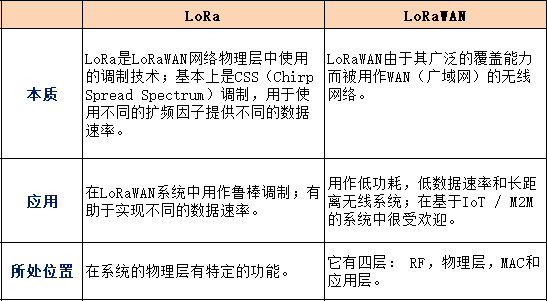
(Comparison of LoRa and LoRaWAN)
2
Network Architecture of LoRaWAN
LoRaLAN is a wireless communication network protocol that has been validated for complex industrial environments. Its integrated advantages in time (TDMA), frequency (TSCH), and space (star networking) make this simple yet effective protocol possess embedded self-organization and self-healing capabilities, greatly reducing the complexity of network deployment and ensuring long-term predictable stable performance for wireless networks.
The network architecture of LoRaLAN is as follows:
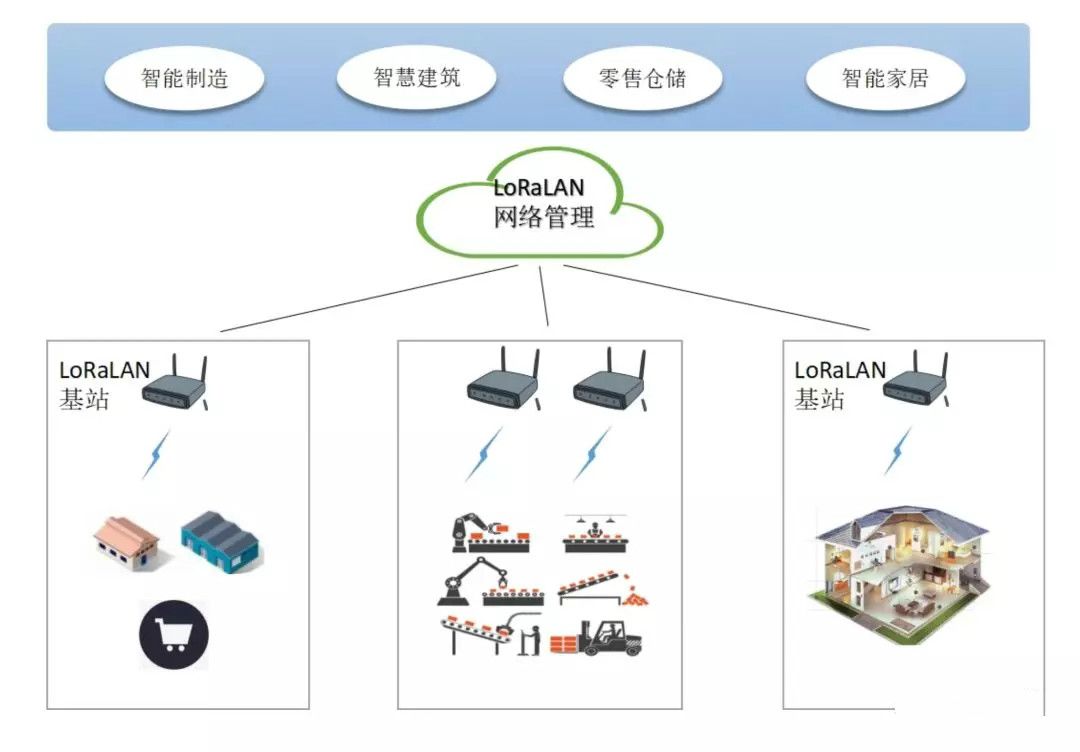
As shown in the figure above, the LoRaLAN network consists of three types of network elements: terminals, base stations, and network servers. The network server serves as the unified management platform for the LoRaLAN network, allowing terminals and base stations to connect to the network, which can be deployed locally or based in the cloud.
The protocol layers of the LoRaLAN network are as follows:
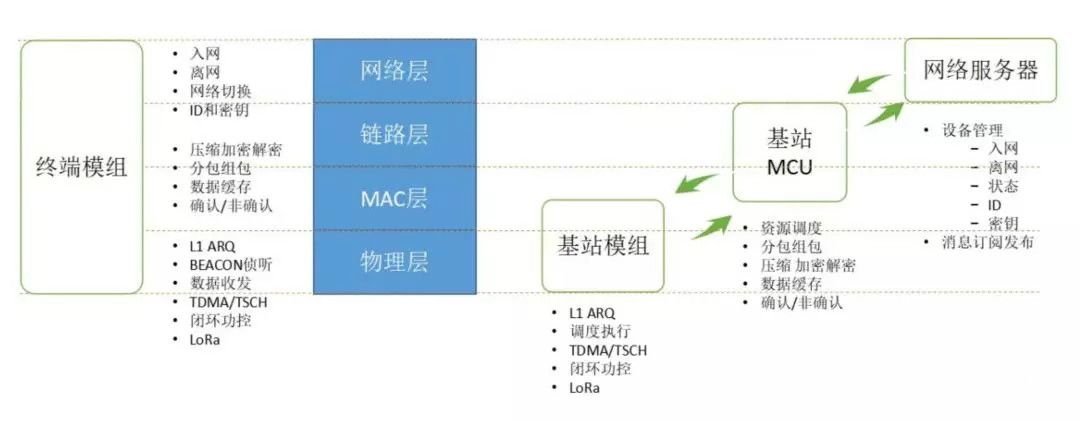
3
Main Technical Features of LoRaLAN
LoRaWAN employs the spread spectrum technology developed by Semtech, operating in the sub-1GHz frequency band, Europe: 868MHz, North America: 915MHz, China: 433MHz, 470-510MHz. The data transmission rate of LoRaWAN ranges from 300bps to 50kbps, and it features 128-bit AES encryption for security.
Many existing deployed networks utilize a mesh network architecture. In a mesh network, individual terminal nodes relay information from other nodes to increase network communication distance and area size. While this expands the range, it also increases complexity, reduces network capacity, and decreases battery life, as nodes may receive and relay unrelated information from other nodes. The star architecture is most meaningful for long-distance connections as it ensures battery life. Below are some of the main technical features of LoRaWAN.
• Wide Coverage and Interference Resistance: Based on the Chirp modulation technology used by 2.4G LoRa, effective distance can reach up to 800 meters (SF7) under certain bandwidth conditions.
• Time Division Multiple Access: LoRaLAN references the 802.15.4BE mode, employing TDMA access methods combined with dynamic resource scheduling, significantly improving real-time response performance, reducing packet collision rates, and enhancing system capacity.
• Low Power Consumption: The physical layer based on 2.4G LoRa achieves significantly lower RX and TX power consumption compared to Zigbee and Wireless HART; the sleep current is only at the level of 200nA.
• Duplex Communication Dynamic Scheduling: The base station acts as the central allocation node for time and frequency resources, responding in real-time to both uplink and downlink data transmission needs through dynamic resource scheduling, maximizing the utilization of air interface resources.
• QoS Assurance Mechanism: Supports four QoS labels for messages: “reliable/unreliable, priority/non-priority.” For reliable messages, LoRaLAN has designed a bidirectional ACK mechanism to ensure successful transmission of both uplink and downlink messages. The priority/non-priority labels allow for resources to be prioritized for more important messages, such as uplink alarm messages and downlink control messages.
• Fragmentation and Reassembly: LoRaLAN has designed message fragmentation and reassembly capabilities at the link layer, simplifying application layer design and processing efficiency for large message transmission is significantly higher than performing similar tasks at the application layer.
• Closed-loop Power Control: The base station can quickly adjust the transmission power of terminals based on the SNR and RSSI carried by uplink data, further reducing terminal power consumption.
• Time Slot Synchronization and Frequency Hopping: Implements the TSCH protocol, ensuring time slot synchronization between the base station and terminals while improving interference resistance through frequency hopping, adapting to the complex electromagnetic environment of industrial scenarios.
• Support for A/C Class Devices: LoRaLAN continues to retain support for LoRaWAN A/C class devices in resource scheduling.
• Security Assurance: Upgraded the encryption scheme of LoRaWAN, employing AES128 CBC-based encryption technology, supporting data confidentiality and integrity protection, and dynamic key negotiation.
4
Network Deployment Status
Currently, the LoRa Alliance has over 500 members, providing services in more than 100 countries, with 58 alliance member operators operating in 41 countries and 67 public network operators. Its global network coverage is illustrated in the following figure:
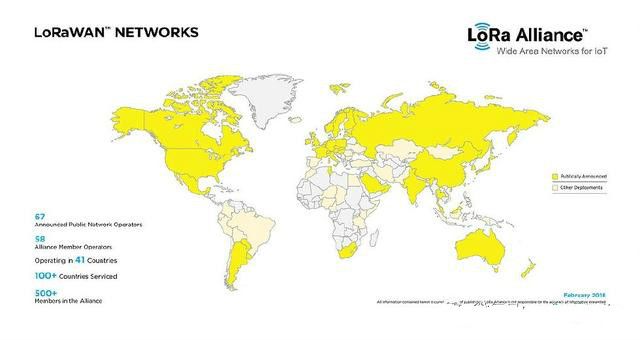
5
Applications of LoRaWAN
The technical features of LoRaWAN are highly suitable for enterprise-level IoT project applications, mainly in the following areas:
• Meter Reading (e.g., electricity meters, gas meters, water meters)
• Agriculture (can be used for irrigation control, environmental monitoring, animal tracking, etc.)
• Tracking (e.g., motorcycles, bicycles, cars, containers, children, pets, valuable items)
• Smart Grid (can be used for fault management, cable theft prevention, measurement)
• Wearable and Health Devices (e.g., medical wearables, connected bracelets, status monitoring, connected clothing)
• Industrial Field (e.g., earthquake sensing, avalanche and flood monitoring, heating and AC, equipment status, forest fire detection, air pollution, worker health monitoring, etc.)
• Smart Cities (can be used for managing street lights, infrastructure monitoring, waste management, advertising, smart parking, vending machines, etc.)
• Connected Homes (smoke detection, security systems, smart appliances, heating, control and monitoring)
• Vehicle Communication (traffic information, traffic lights, vehicle status)
More Recommendations
-
In-depth | The Second Battlefield of Quantum Mechanics: Quantum Computers
-
Deep Dive into the Sensor Market
-
How to Do Business in IoT? Four Major Functions of Networking Platforms to Assist
-
2018 Global Cloud Computing Score Report: Where Does China Rank?
-
No More “Zhou Someone” in Jianghu: The Application of IoT Technology in Electric Bicycle Anti-theft
